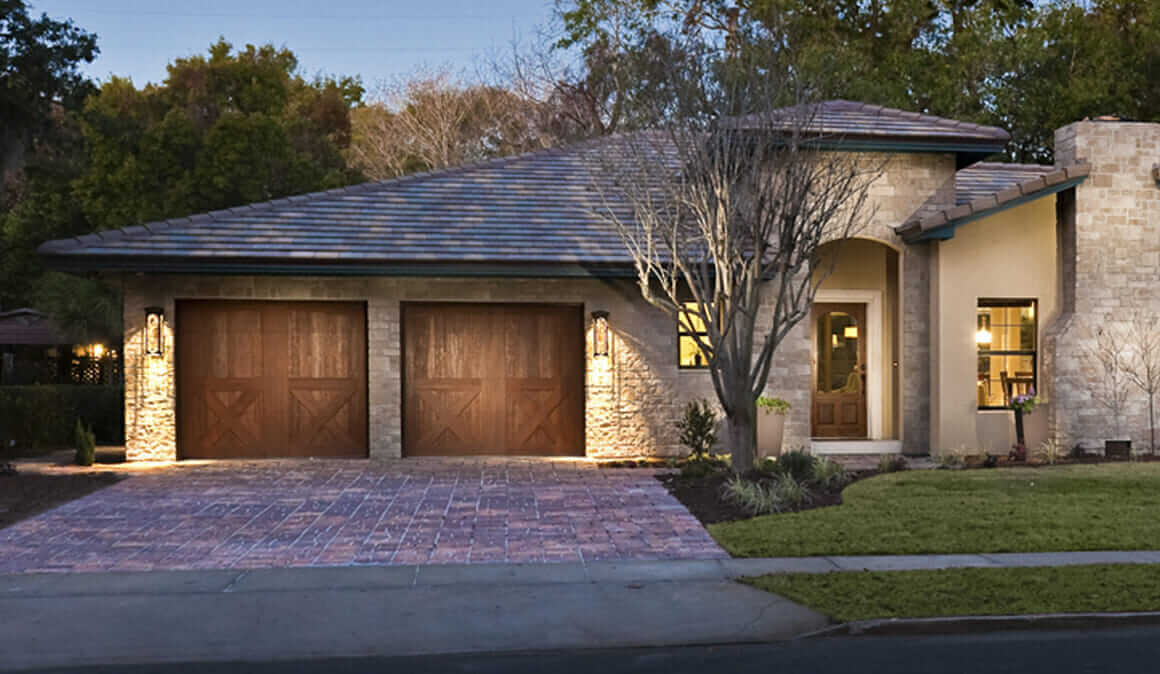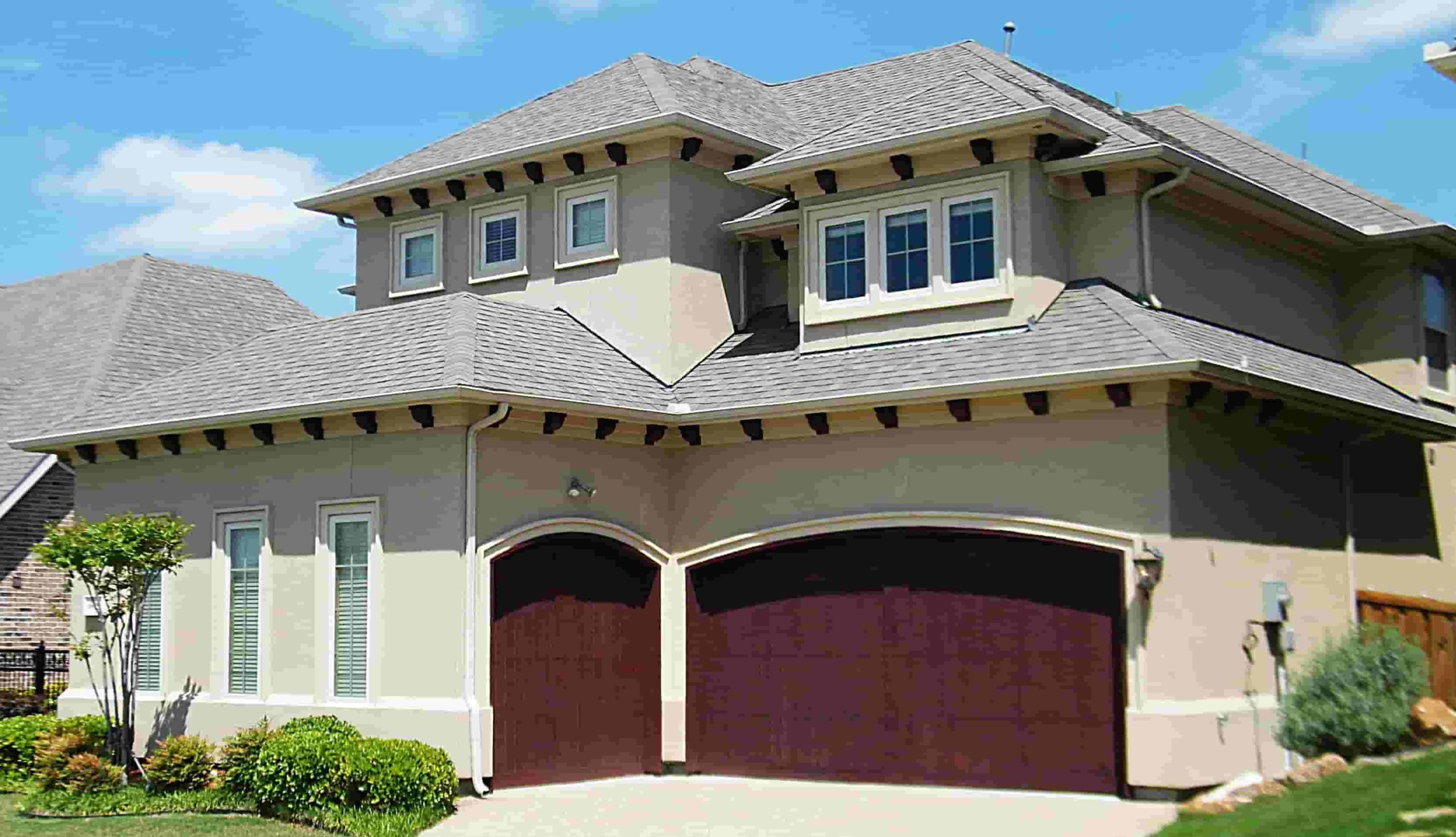Buying a new garage door? Just like any other element of your home, your garage door is one of many parts that make a greater whole. You want your purchase to make your home a better place to live without ruining your budget. Ask yourself these simple questions to get started on your garage door search.
Owning your own home means you can personalize it however you want, but it also means you must maintain it. Whether you own a historic home or a new build, chances are you will have to do repairs and other fixes at some point.
When you keep your home in good condition, it makes it more pleasant to live in and is better for the long run. At some point, for instance, you may want to sell your home. The maintenance and upgrades you do now will increase its worth, and you may end up selling it for a significantly higher price than you bought it for.
How Maintenance and Upgrades Improve ROI
Return on investment (ROI) refers to something’s worth after investment was made to improve it. For example, house flippers rely on ROI to make a profit. They buy inexpensive homes, invest money to fix them up and then resell them. Their profit would be their return on investment because it reflects how much more the home was worth after they renovated it.
When you put money into your home, you’ll get money out when you sell it.
For homeowners who are ready to sell, renovations are an important consideration. Some homes have features that seem outdated to current homebuyers. To make their home competitive among others for sale, renovations are often the key. If you have the means to renovate, these projects almost always end up paying off.
Your Return On Investment (ROI) From Installing a New Garage Door
Installing a new garage door is an easy and relatively inexpensive way to upgrade your home. Installing an upscale garage door is the #1 remodeling project to improve on the ROI of your home. This project has a better return on investment than stone veneer, adding a deck to the home and remodeling the kitchen. These other projects were much more expensive to complete as well.
This statistic shows just how important curb appeal is to homebuyers. When a homebuyer pulls up to your house, the exterior is the first thing they see. They will look at the design of the home, as well as the landscaping, and form an initial impression. If that impression is negative, the inside would have to truly wow the homebuyer to alter their opinion.
Replacing your garage door can help create the very best first impression. When the prospective homebuyer visits your home, they will see a beautiful door that blends flawlessly with the rest of the home and is a unique and attractive touch.
Choosing home improvement projects is a challenge. There’s always something that can be done, and all homeowners search for projects that will provide a significant return on investment. Good news: A replacement garage door is proven to provide a return on investment greater than many other home improvement efforts.
But when should you make the leap? Here are a few ways to know when to replace your garage door:
Slowness
Does your garage door respond slowly when you try to raise or lower it? It should take only a moment between hitting the opener button and your door leaping to action. If there’s any sort of delay, especially a lengthy one, it’s time to have your door examined by a professional who can identify any issues.
Noise
A brand new garage door is smooth and relatively quiet. As that garage door gets older, a number of factors make it run rougher and louder. Have you noticed a sudden increase in just how noisily your garage door opens and closes? If so, it may be a sign the unit is ready for a full overhaul.
Attractiveness
A garage door is often one of the most prominent parts of your home that faces the street. Perhaps when it was installed years ago, it was sleek and stylish. But no style lasts forever. You have the opportunity to greatly enhance your home’s curb appeal when you install a modern garage door that complements your home’s existing architecture.
Safety and Security
New garage doors help keep the assets you store inside your garage safe and secure, both from the elements and from anyone who might try to break in. New garage doors also include the latest in safety technology, including automatic reversal if the door comes into contact with an unexpected object. If your aging door does not provide the safety and security you want, it’s time to consider a new garage door.
Breakdowns
One of the biggest signs your garage door needs replaced is malfunctions. A garage door is just like any asset. You can invest in replacement parts over and over. But you eventually reach a point at which it’s more cost-effective to simply replace the entire unit. Is your garage door in need of regular maintenance and repairs — perhaps more regularly than you would like? Consider the option of a full replacement.
Damage
Dings and dents pile up over the years, whether from unintended collisions, balls thrown by children against the door, hail or other factors. You can manage these dings and dents for a certain amount of time, but they will eventually overwhelm your garage door and its appearance.
Bills
Are your energy bills skyrocketing? You may be losing air conditioning cooling through your non- or poorly insulated garage door. Make your home more energy efficient when you choose a new insulated unit.
How Much Does a Garage Door Cost?
Before you look for a new garage door, you should establish a firm budget. Whether it’s just you making the decisions or an entire family, you need to get everyone together to figure out what you can afford.
Factors that affect the price of your door include:
- Installation: Will you install the door yourself or hire an expert?
- Size: How big does your door need to be? Learn how to measure for a new garage door on our blog.
- Material: Do you want low-end or high-end garage door materials?
- Technology: Would you like an automatic opener? Read about the advantages of an electric garage door opener.
- ROI: What kind of return on investment (ROI) will your door bring?
- Decorative accents: Would you like to add elements like windows or lighting?
Determine what you want in a garage door and base your budget off those expectations. For example, if you plan on installing a garage door opener, you have to budget for the price of the opener and add it to the base garage door price.
What Kind of Garage Door Should I Get?
Now that you have a budget in mind, you can choose from the many types of garage doors available for sale.
You can choose from style options like:
- Paneling: Flat panels, raised panels, and carriage house panels all give your garage door a different feel. Garage door paneling also comes in a variety of shapes and sizes.
- Color: Garage doors come in a full spectrum of colors and textures.
- Windows: Adding windows to your garage door lets a little light into your garage. Choose from multiple types of glass and window shapes.
- Lighting: Illuminate your garage door for added security, safety, and beauty.
What Color Garage Door?
Choosing the right garage door color can be easier than you might think. Some of the most common color choices for garage doors include:
- White
- Gray
- Black
- Beige
- Dark brown
If you’d like a garage door color that will blend in with the rest of your home’s exterior, any of these colors would work well. When selecting a neutral shade for your garage door, you can add pops of color in other places, like with your front door or shutters. Neutral is probably the safest choice when it comes to picking a color for your garage doors.
Would a Coordinating Color Work Better?
There is a difference between coordinating and matching your garage door’s color with the rest of your home’s color scheme — and in most cases, you don’t want your garage door to be the exact same color as the rest of your house.
You do want the color of your garage door to complement the rest of your house, however. For example, if you owned a home with a color scheme of light brown, cream and sand, a black garage door might look out of place. Look at the materials of your home and their colors. If your home is made of brick, a beige door would complement it very well. It is important to pick a color that is in the same color family as the rest of your home or that complements one of those colors. This coordination will add to the curb appeal of your home.
It’s possible that you’ve seen houses with a garage door that matches the front door or the shutters. Depending on the style and color scheme of your home, this could work well. If you are looking to make your home more unique than your neighbors’ homes, you could pick a dark red, for instance, for your front door and garage door. It may be more uncommon, but what matters is that you like it.
Would You Rather Go With a Contrasting Color?
If you decide you don’t want a coordinating color, then go with a contrasting color. If you don’t want too much contrast, simply choose a different shade. For example, if your home is a beige, choose a garage door that is a dark walnut brown. If your garage is in a mainly shaded area, pick a light color for the door to contrast the shade.
How to Measure for a New Garage Door
Before you even start looking at new garage doors, be sure of the proper size garage door you need. Fortunately, measuring your garage door can be a quick, easy process with the right approach.
Before you start, you’ll need to be prepared with some basic materials. You’ll want a tape measure to get the actual measurements, a step ladder for easy access to all areas, and a pen and paper to write it all down.
Steps for Measuring Your Garage Door
Now you’re ready to actually measure the garage door.
Start by measuring the width of the door. For this measurement, you want to make sure you record the width at its widest point. You will measure from the middle of the left side of the finished opening directly across to the right side. Measure in feet and inches. It may be difficult for you to stretch a tape measure all the way across by yourself, so get assistance or use a digital tape measure.
Once you’ve got the width, the next step is to measure the height, also in feet and inches. Again, you want the highest possible point. Make sure the floor is level and the top of the finished opening is as well. Measure from the garage door floor to the top of the finished opening.
Now you need to know how much room you have between the door opening and the ends of the garage. Measure the width from the opening on either side to the end of the garage on that side. You’ll need up to 3.75 inches on each side to install the vertical track. For a double car garage door, you need a center post at least 10 inches wide.
You’re almost done. Next, you’ll need to measure the distance from the top of the door opening to the ceiling. You’ll need a stepladder for this part. This area is known as the headroom, and it is important because the garage door will need to roll up on tracks through this area.
Finally, you’ll need to measure the distance from the garage door opening to the back of the garage. This is called the backroom, and it is also critical because this is the area where your garage door will retract when open. If you have a sectional door, you’ll need the amount of the door height plus 15 inches for manual lift doors or 18 inches for doors that retract with an electric garage door opener.
Visualize Your Future Garage Door
Thanks to our garage door visualizer, you can see how our selection of products will look on your home. Upload a picture of your house and the visualizer will preview your new door. For more information on our door selection and pricing, contact us today.



